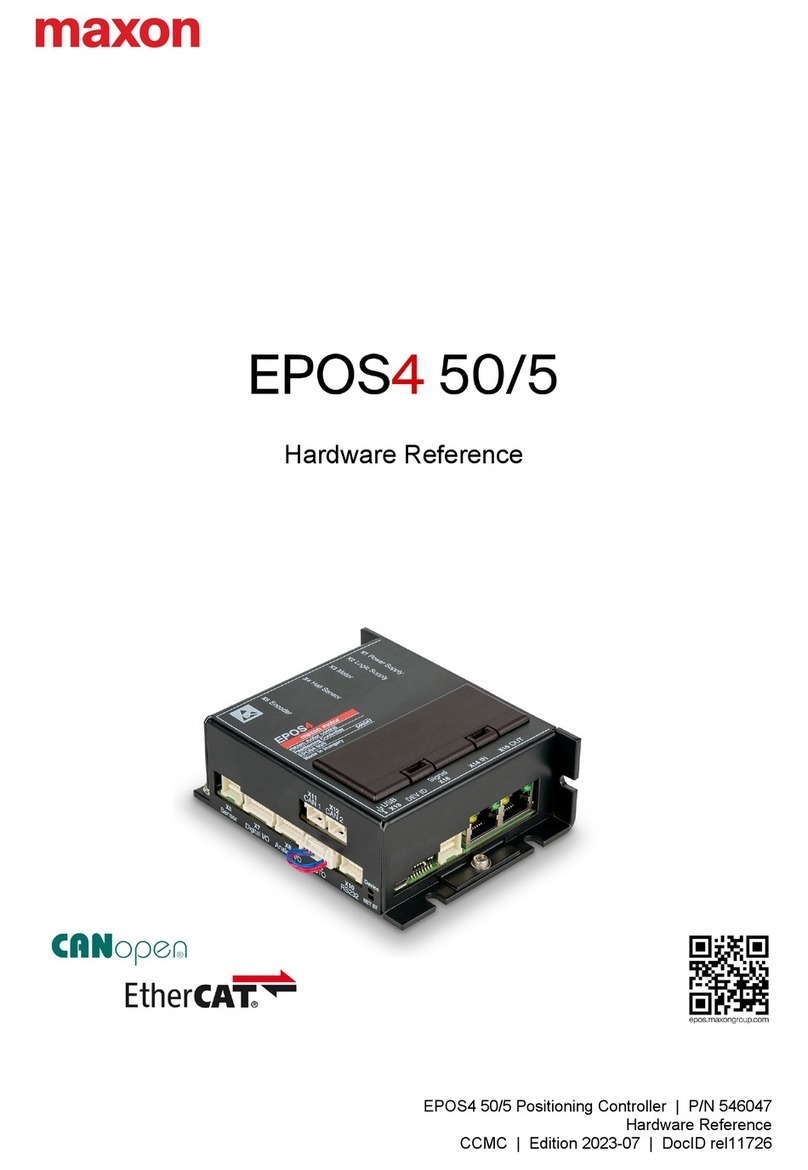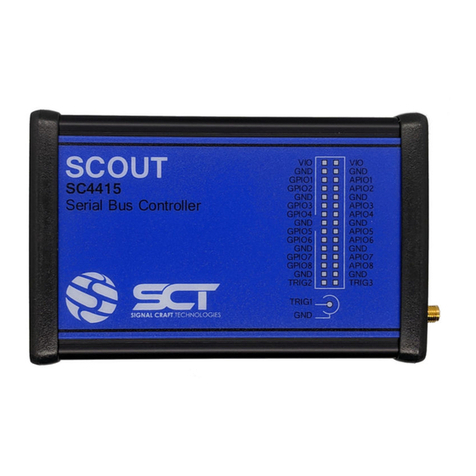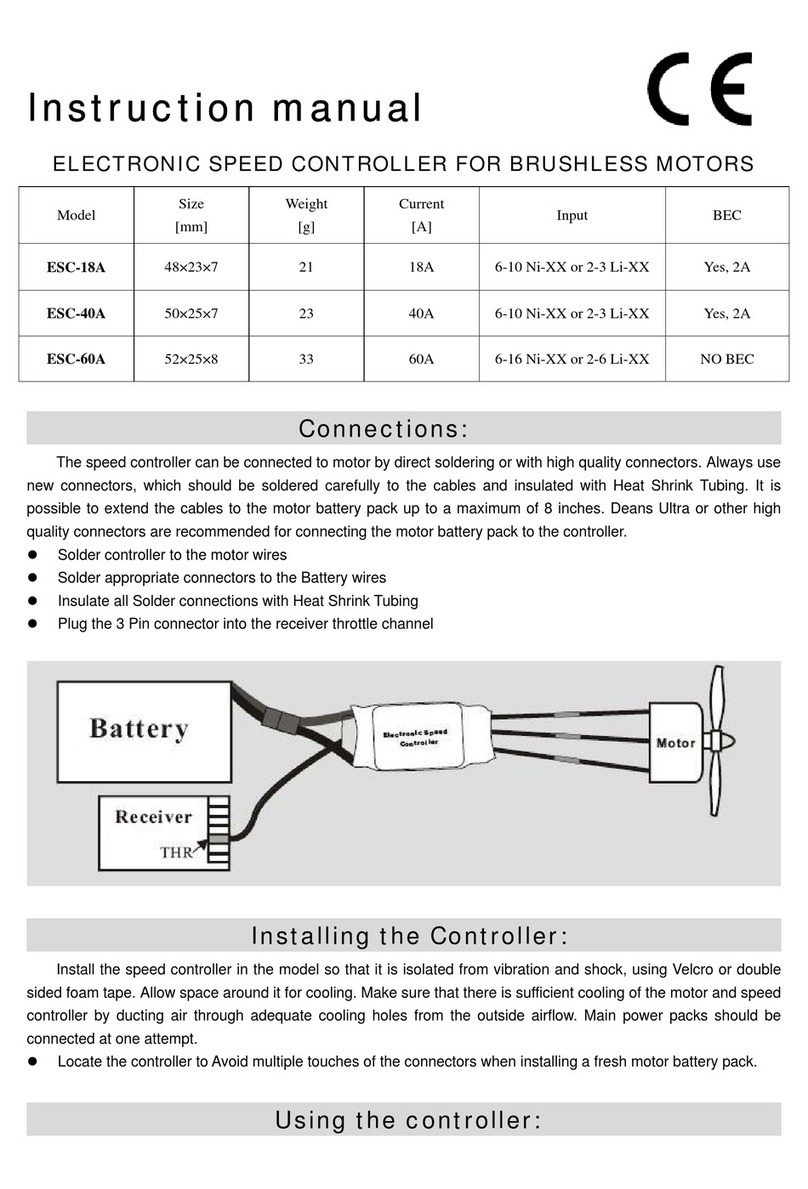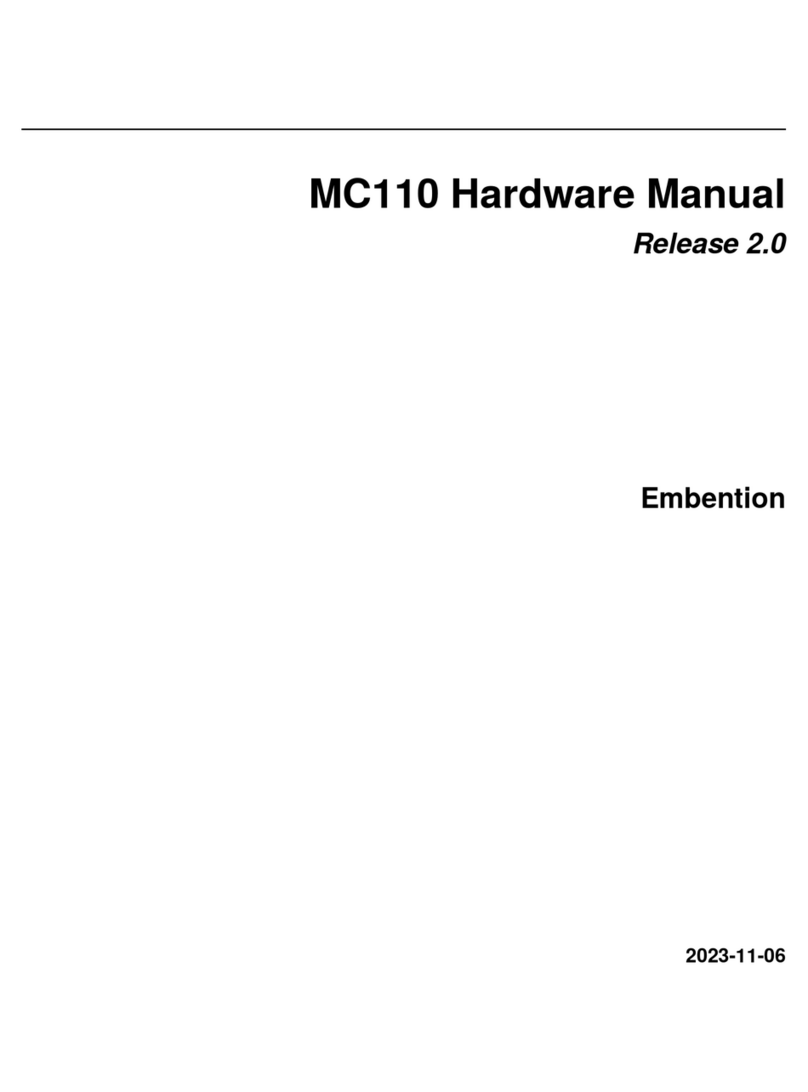Melcor C-1138B/UR User manual

..
-----------·------------.
NA
VSHIPS 94478
TECHNICAL
MANUAL
for
RADIO
SET
CONTROL
C-ll38B/UR
MELCOR
ELECTRONICS
CORPORATION
110
Central
Avenue
FARMINGDALE,
N.
Y.
(Non-Registered)
DEPARTMENT
OF
THE
NAVY
BUREAU
OF
SHIPS
-----------·--------------
Contract.· N 126-099308
Approved
by
BuShips: 12
JULY
1962

Effective Pages
PAGE
NUMBERS
Title
page
ii
to
vi
1-0
to
1-1
2-0
to
2-1
3-0
to
3-1
ii
NAVSHIPS
94478
C-11388/UR
LIST
OF
EFFECTIVE
PAGES
CHANGE IN PAGE
EFFECT
NUMBERS
Original
4-0
to
4-2
Original
5-1
to
5-4
Original
6-1
Original
7-0
to
7-3
Original
i
-1
to
i-
2
~~------·-···-
FRONT MATTER
CHANGE IN
EFFECT
Original
Original
Original
Original
Original
ORIGINAL

FRONT MATTER
NAVSHIPS
94478
C-11388/UR
Promulgating
Letter
.....,
DEPARTMENT
OF
THE
NAVY
BUREAU
OF
SH'PS
WASHINGTON
25,
D.
C.
IN
REPLY
REFEIII
TO
Code
242-100
-
ORIGINAL
From:
Chief,
Bureau
of
Ships
•
To:
Subj:
All
Activities
concerned
with
the
Installation,
Operation,
and
Maintenance
of
the
Subject
Equipment
Technical
Manual
for
Radio-Set
Control
C-1138BjUR,
NAVSHIPS
94478
1.
This
is
the
Technical
Manual
for
the
subject
equipment
and
is
in
effect
upon
receipt.
2.
When
superseded
by
a
later
edition,
this
publication
shall
be
destroyed.
3.
Extracts
from
this
publication
may
be
made
to
facilitate
the
preparation
of
other
Department
of
Defense
publications.
4.
Errors
found
in
this
publication
(other
than
obvious
typogra-
phical
errors),
which
have
not
been
corrected
by
means
of
Temporary
Corrections
or
Permanent Changes
should
be
reported.
Such
reports
should
include
the
complete
title
of
the
publication
and
the
publi-
cation
number
(short
title);
identify
the
page
and
line
or
figure
and
location
of
the
error;
and
be
forwarded
to
the
Publications
Section
of
the
Bureau
of
Ships.
5.
All
Navy
requests
for
Bureau
of
Ships
electronic
publications
should
be
directed
to
the
Naval
Supply
Depot,
5801
Tabor
Avenue,
Philadephia
20,
Pennsylvania.
R.
K.
JAMES
Chief
of
Bureau
...
Ill

Correction
Page
CHANGE
NO.
iv
NAVSHIPS
94478
C-11388/UR
RECORD OF CORRECTIONS MADE
DATE
SIGNATURE
OF OFFICER
MAKING
CORRECTION
.
~
FRONT
MATTER
ORIGINAL

FRONT MATTER NAVSHIPS
94478
C-11388/UR
Contents
TABLE
OF
CONTENTS
SECTION 1
-GENERAL
INFORMATION
Page
Introduction.
. . . . . . . . . . 1 - 1
Technical
Manual
Coverage
1 - 1
Functional
Description
. 1 - 1
Quick
Reference
Data
. . . .
1-
1
SECTION 2 - INSTALLATION
Unpacking
. . . . . . • . . . . • . • . . • 2
~
1
Installation
. . . . . • . . . . . . . 2 - 1
Initial
Adjustments
. . . . . . . . . . . .
2-
1
SECTION
3-
OPERATOR'S
SECTION
Introduction.
. . • . . . . . . . . . . 3 - 0
Capabilities
and
Limitations
.
3-0
Operation
. . . . . . . . . .
3-
0
Routine
Checks.
. • . . • . . . • . . . . . . • .
3-
1
SECTION 4 - PRINCIPALS
OF OPERATION
General
Description
of
Circuits
. . . . . . .
4-
1
Circuit
Analysis
. . • . . . . • • . • • . . • . •
4-
1
ORIGINAL
Page
Test
Procedures
. • • . . . . • . . • . . . • • • . • • •
4-
2
SECTION
5 -
TROUBLE-
SHOOTING
General.
. . • . . . . • . . • . . . • . . . . . . 5 - 1
Theory
of
Localization
• . • • . • • • . . • • • S - 1
Unit
Trouble
Shooting
. . • • • . . . • . . . . • 5 - 1
SECTION
6 - REPAIR
Failure
Report
. . . . . . . . . . . . .
6-
1
Test
Equipment
and
Special
Tools
6-
1
Location
of
Parts.
6-
1
Adjustments
. 6 - 1
Lubrication....
6-1
SECTION
7 -PARTS LIST
Introduction.
. . . • • . • • . . . . • . .
7-
0
Maintenance
Parts
List
. . . . . . . .
7-
0
Stock
Number
Identification
. • .
7-
0
List
of
Manufacturers
• • . • . • . . . . .
7-
0
Index
. . . . . . . . . . . . . . . . . . . . . . . . . . . . i - 1
v

Illustrations
and
Tables
NAVSHIPS
94478
C-11388/UR
FRONT
MATTER
.
LIST
OF
ILLUSTRATIONS
Figure
Page
1-
1
Radio
Set
Control,
C-11388/UR
• • • • • • . • • • • • • • • • . • • • • • • . • • • • • • • 1
-0
2 - 1
Radio
Set
Control,
Installation
Drawing
• • . . • . • • • • • • • • . • • • • • . • • • • • • 2
-0
2 - 2
Cable
Stuffing
Plates
and
Terminal
Boards • • • • . • . • • • • • . • • • • • • • • • • • •
2-
1
3-
1
Radio
Set
Control,
C-1138
B/UR,
Front
Panel
• • • • . • • . • • • • . • . • . • • • . • •
3-0
4 - 1
Radio
Set
Control,
C
-1138
BI
UR,
Schematic
Diagram,
• • • • . • • • • • • • . • • • • 4
-0
5 - 1
Main
Chassis,
Showing
Location
of
Components
• • • • • . • • • • • • . • • . • • • • • • 5 - 1
5 - 2
Trouble
Shooting
Chart
• • . • . • • • . • • . • . • . . • . • • • • . • . • • • • . • • • . • • • 5
-2
5 - 3
View
of
Terminal
Boards
TB-10
1
and
TB-102,
• . • • . • • • . • • • • • • • • • • • • • •
5-3
LIST
OF
TABLES
SECTION
1-
GENERAL
INFORMATION
Table
Page
1 - 1
Equipment
Supplied
. . . • . . • . . . • • • . . . • . . . • • • . . • • . • . . • • . . • • . • • 1 - 1
SECTION 3 - OPERATOR'S SECTION
3 - 1
Routine
Check
Chart
. • . . . • • • . . . • . . . • . • . • . . • • . . . . . . . • • • . • • . • 3 - 1
SECTION
5 -TROUBLE
SHOOTING
5 - 1
Voltage
Measurements
• • . . . . . . . . . . . . • • • . • • • • . . • . • . • . • • . • • • . 5 - 4
SECTION
7 -
PARTS
LIST
7-
1
Maintenance
Parts
List
. . . . . . . . . . . . . . . . . . • • • • . . • . • • • . • . . • • • • •
7-
1
7 - 2
List
of
Manufacturers
. • . • . . • • • • • . . • • . . • . • • . • • . . • • • • . . • • . • • • • 7 - 3
VI
ORIGINAL


1 Section
1-0
NAVSHIPS 94478
C-11388/UR
..
,
FIGURE 1-1.
RADIO
SET
CONTROL, C-1138
B/UR
GENERAL
DESCRIPTION
t
ORIGINAL

GENERAL
INFORMATION
NAVSHIPS
94478
C-11388/UR
Paragraph
1-1
SECTION 1
GENERAL
INFORMATION
1-1
INTRODUCTION
This
technical
manual
describes
the
theory
of
opera-
tion,
installation,
and
maintenance
of
the
Radio
Set
Con-
crol,
ModelC-1138B/UR.
It
is
intended
toprovide
opera-
ting
and
maintenance
personnel
with
the
necessary
infor-
mation
to
utilize
the
equipment
for
remote
operation
of
radio
phone
and
telegraph
transmitting
equipment
and
to
maintain
the
unit
in
first
class
operating
condition.
1-2
TECHNICAL
MANUAL
COVERAGE
This
instruction
book
contains
data
pertaining
only
to
the
Radio
Set
Control,
Model
C
-1138B
I UR.
1-3
FUNCTIONAL
DESCRIPTION
a.
The
purpose
of
the
equipment
is
to
provide
neces-
sary
facilities
to
remotely
control
certain
radio-phone
transmitter
functions
and
the
output
of
a
radio
receiver.
Incorporated
into
the
circuitry
is
the
means
for
turning
on
or
off
anystandard
Navy
shipboard
transmitter,
the
means
to
voice
modulate
(or
key
when
C-W
operation
is
desired)
anystandard
Navy
shipboard
transmitter
and
the
means
to
monitor
and
control
the
output
of
any
standard
Navy
radio
receiver.
The
unit
incorporates
POWER
and
CARRIER
ON
indicators
to
provide
the
remote
control
operator
with
this
information.
Under
standard
operation
conditlons,
as
many
as
four
Model
C
-1138
B/
UR
Radio
Set
Controls
or
similar
units
may
be
parallel
connected
to
a
single
equip-
ment
group
(transmitter
and
receiver)
to
provide
various
remol:e
operating
positions.
b.
The
front
panel
is
utilized
for
the
mounting
of
the
normally
used
controls
and
the
input
and
output
jacks.
The
front
panel
is
hinged
at
the
bottom
and
secured
at
the
top
by
two
captive
thumb
screws.
Access
to
the
chassis
components
is
obtained
by
opening
the
hinged
front
panel
which
swings
the
chassis
out
of
the
unit.
An
earphone
mu-
ting
control
is
located
on
the
chassis
and
is
adjusted
from
the
underside
of
the
chassis.
Two
terminal
boards
are
mounted
inside
the
cabinet
on
the
back
wall
to
provide
connection
points
for
the
external
cabling.
The
equipment
is
illustrated
in
Figure
1-1.
1-4
QUICK
REFERENCE
DATA
a.
Control,
Radio
Set,
Model
No.
C-1138B/UR.
b.
Contract:
Nl26-099308
c.
Contractor:
Melcor
Electronics
Corp.,
Farmingdale,
N.Y.
d.
Inspector:
Inspector
of
Naval
~1aterial,
Garden
City,
N.Y.
e.
Number
of
equipments
per
package:
Six
complete
units
per
package
f.
Cubical
Contents:
2520
cubic
inches
g.
Total
weight:
55
lbs.
TABLE
1-1.
EQUIPMENT
SUPPLIED
QUAN.
PVERALL
DIMENSIONS
(in.)
l
PER
NAVY
TYPE
VOL.
EQMT.
'NAME
OF
UNIT
DESG.
HEIGHT
WIDTH
DEPTH
CU.
IN.
WGHT.·
1
Control,
Radio
Set
C-11388/UR
L
S-1/2
8
7-15/16
350
8.5
2
Technical
Manual
NAVSHIPS
·-
---
-----
·--
--
----
---
-----
··--'-----
-
-·
L-
ORIGINAL 1-1

Figure
2-1
a-----!1
INCHES
"''
C~EARANCE
REQUIRED
TO
OPEN
PANE~
(D
(t
NAVSHIPS 94478
C-11388/UR
(D
(t
INSTALLATION
NOTE -
SEE
FIGURE
2-2
FOR SUGGESTED
LOCATION
OF STUFFING HOLES
IN CABLE ENTRANCE PLATES.
~""
()
T
JIAI,~
o IT
lit
;;,
...
-:::-
,
,'
,ro
,'
,\
,
....
"
~
.,
-r
...
·~~~-
0-l
FIGURE
2-1.
RADIO
SET
CONr.LROL,
INSTALLATION
DRAWlNG
2-0
ORIGINAL

INSTALLATION
NAVSHIPS
94478
C-11388/UR
Paragraph
2-1
SECTION 2
INSTALLATION
2-1 UNPACKING
Six
Radio
Set
Control
Units,
Model
C-1138
B/UR,
are
shipped
in
one
packing
box.
Use
caution
in
unpacking
the
unit
to
prevent
dama,:;e
to
the
unit.
2-2
INSTALLATION
a.
LOCATION,
No
specific
location
is
prescribed,
The
control
unit
may
be
located
wherever
necessary.
The
location
is
determined
by
operating
and
space
require-
ments.
b.
MOUNTING,
The
control
unit
is
housed
in
a
steel
case
which
is
suitable
for
mounting
on
either
a
vertical
or
horizontal
surface.
There
are
no
mounting
holes
or
studs
provided
on
the
unit.
The
individual
installation
deter-
mines
the
number
and
location
of
mounting
holes
and
the
installing
personnel
drill
them
as
necessary.
Maintain
clearance
for
the
hinged
front
panel.
The
clearance
must
be
sufficient
to
allow
the
panel
to
swing
about
a
180°
arc
to
provide
accessability
to
the
terminal
boards
on
the
back
of
the
cabinet.
See
figure
2-1.
0 0
...-L..,
(
·--+----
-]
\ I I
'
......
+
..........
,a., I r-"',
(
.--t-.,+-+--
',.j./
I
...
tj
~
I i , .
I
•---++----
N
'\ I
'I
I
"-+j,
s
I
',/-
-",I
: illMM
0 ' 0 -
t=
1
HOLE
SIZES
FOR·
/2
:
~;;;~
~:
~:~
>·•;1!:!__J
0
Jl•-"
NPT
NOTE
SUGGESTED
LOCATION
OF"
MOUNTING
HOLES
FOR
STUFFING
TUBES
IN
CABLE
ENTR.4NCE
PLATES.
HOLE
SYMBOLS
INDICATE
~TUFF
lNG
TUBE
SIZE.
PLATE
SHOWN
IS
TYPICAL
OF.
FOUR
ON
UNIT.
@
c.
CABLING.
The
unit
is
provided
with
cover
plates
on
each
side
of
the
box
except
the
front
and
back.
These
holes
are
covered
by
steel
plates
which
are
removable
to
permit
them
to
be
drilled
for
cable
stuffing
tubes
as
re-
quired.
The
plates
will
accommodate
two
size
A,
one
size
Band
one
size
D
stuffing tubes
if
necessary.
Suggested
procedure
is
shown
in
figure
2-2.
After
mounting
the
ca-
ble
stuffing
tubes
the
access
plates
are
replaced
on
the
case
and
the
entrance
cables
connected
to
the
terminal
boards
as
required.
The
terminals
are
marked
as
shown
in
figure
2-2.
Entrance
to
the
case
may
be
made
through
one
or
more
access
plates
as
required.
2-3
INITIAL
ADJUSTMENTS
The
speaker
amplifier
is
adjusted
for
the
correct
level
with
the
normal
output
of
the
receiver
being
fed
into
it.
This
condition
exists
when
the
push-to-talk
switch
has
not
been
actuated
and
relay
K101
is
not
energized.
Earphone
muting
control,
R10.4, is
located
on
the
chassis
and
is
pre-
set
and
locked
at
10,000
ohms.
©
TB-101
, 1 1
TB-102
FIGURE
2-2.
CABLE
STUFFING
PLATES
AND
TER:rvTINAL
BOARDS
ORIGINAL
2-1

Paragraph
3-1
NAVSHIPS
94478
C-11388/UR
OPERATORS SECTION
SECTION 3
OPERATOR'S SECTION
3-1
INTRODUCTION
The
RADIO
SET
CONTROL,
Model
C-1138B/UR
is
the
medium
for
remote
operation
of
a
standard
shipboard
radio
transmitter
and
receiver.
It
provides
the
means
to:
(l)turn
the
transmitter
ON
and
OFF;
(2)voice
modulate
or
key
the
output
of
the
controlled
transmitter;
(3)
regu-
late
the
level
of
the
audio
output
of
the
receiver
to
the
earphones.
3-2
CAPABILITIES
AND
LIMIT
AT
IONS
The
C-1138B/UR
control
set
is
capable
of
being
con-
nected
in
parallel
with
up
to
three
more
units
to
provide
remote
operation
of
a
single
equipment
group
from
as
many
as
four
different
locations.
It
is
designed
to
operate
only
with
standard
Navy
shipboard
transmitting
equipment.
3-3
OPERATION
(See
Figure
3-1)
a.
TRANSMITTER
OFF-ON
SWITCH
(1)
To
energize
the
controlled
transmitter
press
the
START
button
momentarily.
This
energizes
the
starting
re-
lay
in
the
transmitter
and
the
POWER
indicator
is
illumi-
nated,
(2)
To
de-energize
the
transmitter
press
the
STOP
button,
This
shorts
the
starting
relay
coil
in
the
transmit-
ter,
de-energizing
the
starting
relay
and
the
POWER
indi-
cator.
b.
TRANSMITTER
INPUT
CIRCUITS,
Depending
upon
what
type
of
emission
is
being
uti-
lized,
the
operator
may
use a
key,
handset,
chestset
or
mi-
crophone
(non·e of
which
is
supplied
with
this
equipment).
When
voice
modulation
is
used
the
operator.
must
actuate
the
push-to-talk
switch
on
the
microphone,
handset
or
chestset
he
is
us.ing
to
connect
the
microphone
in
series
with
the
microphone
input
transformer
and
actuate
the
re-
lay
which:
(1)
cuts
off
the
speaker;
(2)
actuates
the
push-
to-talk
relay
in
the
controlled
transmitter
and;
(3)
energizes
the
CARRIER
ON
indicator
at
his
own
and
the
paralleled
control
units,
indicating
that
transmitter
is
in
use,
c.
EARPHONE LEVEL
CONTROL
THE
EARPHONE LEVEL
potentiometer
is
adjusted
CARRIER
ON
1102
EARPHONE
LEVEL
R103
POWER
1101
3-0
HANDSET
OR
CHESTSET
J101
MICROPHONE
PHONES
J102 J103
KEY
J104
START.STOP
TRANSMITTER
S101
FIGURE
3-1.
RADIO
SET
CONTROL,
C-l138B/UR,
FRONT
PANEL
ORIGINAL

OPERATORS SECTION
NAVSHIPS
94478
C-11388/UR
Paragraph
3-4
by
each
operator
to
suit
his
own
listening
habits.
3-4
ROUTINE CHECKS
d.
A
white
acetate
card
is
provided
in
a
holder
on
the
front
panel
on
which
pertinent
station
or
channel
informa-
tion
may
be
noted.
The
Checks
which
are
to
be
performed
by
operating
personnel
are
indicated
in
Table
3-1.
If
other
mal-
functions
occur
a
maintenance
technician
should
be
called.
CHECK
TRANSMITTER
START-STOP
CARRIER
ON
AND
EARPHONE
MUTING
FUNCTIONS
EARPHONE
LEVEL
POTENTIOMETER
--
ORIGINAL
TABLE
3-1.
ROUTINE
CHECK
CHART
(TO
BE
MADE
EACH
WATCH)
PROCEDURE
RESULT
PRESS
START
BUTTON
TilE
POWER
INDICA
TOR
ON FRONT PANEL
SHOULD
BE
f.NERGIZED
ACTUATE
THE
PUSH-TO-TALK
TilE
CARRIER
ON
INDICA
TOR
SHOULD
SWITCH
ON THE
MICROPHONE,
BE ILLUMINATED
AND
THE
EARPHONE
HANDSET
OR
CHESTSET
OUTPUT
SHOULD
BE
AUDIBLE
LISTEN
ON
EARPHONES
AND
CW
ROTATION
SHOULD
INCREASE
THE
ROT
ATE
THE
CONTROL
LEVEL IN
TilE
EARPHONES
AND
CCW
KNOB BOTH WAYS.
ROTATION
SHOULD DECREASE
THE
LEVEL
--
---------
3-1

Figure
4-1
JUMPER~
F"OR
.tl~O
1.(
U3E
CONNI!CT
.T
TO
SP
FOR
//.SV.
l/34
CONNICT.:TT04
TERMINAL
I
2
3
"1:l
.,.
....
J
"'
0
SP
lXI-
5
,......o
6
"'
.....
~I
7
.;:.c..l
8
~
9 }
....
I))
10
f-o
It
12
.,
"0
13
}
....
,.
"'
19
}
J:N
ZO
,......0
A'
}
"'
.....
B'
~I
A }
·-lXI
Ef-<
B
....
c
I))
D
f-o
E
SPARES
TB-101
--:::::-
I v
z~
v
.3
4,_,
.r
SPO
~
.~~
NAVSHIPS
94478
C-11388/UR
~IIOIPOWIR
j_~~~
£
f.O_(_
r
'~_,.,
_,_.
'""'
. =
/VVVv
T'-
1
e·~
tro::
~~~~~
T
101
,
..
·~
r
Q~
I
OHM~
.
JD
I
101
~
c,;::
1
-,,.
• s
""2
,,~
1
A':A~~tA
·vvv
;vv
12
20~
•· I!JitRPHON/1
I
.Po-l-
L',_'::fu
~~
14
'"'?
" <
/,J
.
',¥,"
·~';'"
...
'
·~
RIO~
~
~
00
¥ 0
3PO
IT-
~E~-
~-:-~
SPO
0
~
...
L_
SPO
14.
••
..
'1
Ill
~~
K
101
E
'··
£)~
c<>
8
·I-·
A~
f--
f--
e'v
----------
~-
A'~
--
L_
TB-102
FUNCTION
POWER
BUS
115/230
V
AC
OR
DC
POWER
ON
CONTROL
BUS
POWER
OFF
CONTROL
BUS
f]
•
..
i
I
J
f--
PRINCIPLES
OF
OPERATION
=~
_;tp
~
-o----f\·~
.....
;'
""
"''·
·--~~
~q
~-"v~
:SrART
SIOI
.3TOP
·
.r1o4
J(I~Y
J/02
/'rliCROPHONE
J/01
HANO:lET
OR
CHI.ST.SFT'
.7/0S
.PHOI't/4'3
I
()/
POWER
BUS
115/230
V
AC
OR
DC
ONE
CONNECTION
POINT
FOR
JUMPER
PLATE
FOR
liS
V
OPERATION
COMMON
CONNECTION
POINT
FOR
JUMPER
PLATE
FOR
115
VOLT
OR 230
VOLT
OPERATION
SPARE
CONTACT
USED
EXCLUSIVELY
FOR
JUMPER
STOWAGE
ON 230 V
OPERATION
•
KEY
OUTPUT-RING
KEY
OUTPUT-TIP
NEGATIVE
12
V
I~PUT
POSITIVE
12
V
INPUT
600
OHM
LINE-MICROPHONE
OUTPUT
TO
TRANSMIT
1
o:.R
POSITIVE
12
V
CARRIER
ON
SIGNAL
OUTPUT
POSITIVE
12
V
CARRIER
ON
SIGNAL
INPUT
POWER
IS
APPLIED
TO
TERMINAL
NO.4
VIA
A
SET
OF
CONTACTS
ON
THE
"STARTING"
RI!:LAY
OF
THE
CONTROLLED
TRANSMITTER.
THE
"POWER
ON"
INDICATOR
WILL
NOT
LIGHT
UNTIL
THE
STARTING
RELAY
HAS
ACTUATED.
600
OHM
LINE
RECEIVER
AUDIO
INPUT
TO
CONTROL
UNIT
RECEIVER
AUDIO
OUTPUT
FOR
SPEAKER
AMPLIFIER
600
OHM
LINE-RECEIVER
AUDIO
INPUT
TO
CONTROL
UNIT.
SAME
AS
13
AND
14
600
OHM
HEADSET
OUTPUT
MICROPHONE
INPUT.
CARBON
SINGLE
BUTTON
POSITIVE
12
V
SUPPLY
CARRIER
ON
RELAY
CONTROL
LEAD
THREE
SETS
OF
SPAI'fE
TERMINALS
4-0
FIGURE
4-1.
RADIO
SET
CONTROL,
C-1138B/UR,
SCHEMATIC
DIAGRAM
ORIGINAL

PRINCIPLES
OF
OPERATION
NAVSHIPS
94478
C-11388/UR
Paragraph
4-1
SECTION 4
PRINCIPLES
OF
OPERATION
4-1 GENERAL DESCRIPTION
OF
CIRCUITS
The
Radio
Set
Control,
Model
C-1138B/UR,
imple-
ments
control
of
three
basic
circuits.
These
are
namely,
transmitter
control
circuits,
the
transmitter
input
circuits,
and
the
receiver
output
circuits.
a.
The
transmitter
control
circuits
consist
of
the
START-STOP
TRANSMITTER
switch,
S101,
the
associated
POWER
indicating
lamp,
I101,
the
CARRIER
ON
indicator
lamp,
I102,
and
relay
Kl01
which
actuates
the
push-to-
talk
relay
in
the
transmitter.
b.
The
transmitter
input
circuits
consists
of
the
H.AND-
SETORCHESTSETconnector,
J101,
and
the
MICROPHONE
jack,
J102,
which
connects
the
microphone
(not
part
of
unit)
in
series
with
the
necessary
voltage
and
the
primary
of
the
microphone
input
transformer
(T101).
Actuating
the
push
-to-talk
switch
on
the
microphone,
handset
or
chestset
completes
the
circuit
through
the
microphone
input
trans-
former
and
also
completes
the
circuit
which
energizes
relay
K101.
Relay
KlOl,
when
closed,
applies
the
12
volts
necessary
to
close
the
push-to-talk
relay
in
the
controlled
transmitter.
The
control
unit
also
provides
a
KEY
input
jack,
Jl04,
whichisutilizedwhenC-Woperation
is
desired.
c.
The
receiver
output
circuits
provide
facilities
to
regulate
the
audio
output
level
delivered
from
tlie
remote
receiver.
THE
EARPHONELEVEL
POTENTIOMETER,
Rl03,
is
adjusted
to
provide
the
desired
audio
level
at
the
PHONE
jack,
J103,
and
pins
A
and
B
of
the
HANDSET
OR
CHEST-
SET
connector,
J
101.
The
muting
control
R104
provides
for
adjustment
of
the
input
level
to
the
earphone,
and
phs
A & B
of
the
handset
or
chestset
connector,
when
the
micro-
phone
input
is
being
used.
4-2
CIRCUIT ANALYSIS
(See
Figure
4-1)
a.
START-STOPCONTROL.
The
transmitterSTART-
STOP
switch,
SlOl,
consists
of
two
normally
open,
push-
to-make
contact
switch
circuitS.
Pressing
the
START
but-
ton
connects
terminals
1
and
2
of
terminal
board
TB-10
1
through
the
switch
contacts
and
pressing
the
STOP
button
connects
terminals
2
and
3 of
terminal
board
TB-10
1
to-
gether.
When
the
unit
is
connected
to
a
transmitter
incor-
porating,
the
standard
Navy
shipboard
control
circuitry,
pressing
ti;~STARTbutton
energizes
the
starting
relay
in
the
ORIGINAL
transmitter.
The
starting
relay
when
energized
closes
a
pair
of
contacts
that
short
the
same
wires
the
START
switch
does
and
the
transmitter
remains
energized.
Pressing
the
STOP
button
shorts
the
transmitter's
starting
relay
coi1
through
a
current
limiting
resistor,
causes
the
relay
to
qpen,
and,
de-
energizes
the
transmitter.
Since
the
ST
AR'I:-
S,'fOP
swi
tc;}::tes
arenormallyopen
the
transmitter
may
be
enei'~ized
or
de-
energized
from
any
parallel
connected
remote
control
unit.
b.
POWER
ON
INDICATION.
Power
on
indication
is
provided
by
the
POWER
ON
indicator
lamp
1101
located
on
the
front
panel.
For
operation
from
a
230-volt
line,
re-
sistor
R101
is
connected
in
series
with
the
lamp.
The
lamp
is
rated
at
115
volts;
however,
the
resistor
is
connected
in
series
when
a
230
-volt
supply
is
being
utilized
to
lower
the
applied
voltage
to
approximately
115
volts.
When
a
115
volt
supply
is
used
the
resistor
is
shorted
out
of
the
circuit
by
the
jumper.
Terminal!
of
terminal
board
TB-10
1 is
connected
to
one
leg
of
the
supply
and
terminal
4 is
connected
to
the
other
through
a
set
of
contacts
of
the
controlled
transmitter's
starting
relay.
All
remote
stations
are
parallel
connected
and
the
POWER
indicators
of
all
control
units
in
a
group
are
ill
urn
i-
nated
when
power
is
applied
to
the
controlled
equipment
group
(transmitter
and
receiver).
c.
AUDIO
CIRCUITRY.
The
audio
circuitry
consists
of
the
connectors
J101
and
J102
which,
along
with
the
ter-
minal
board,
TB-102,
provides
connection
facilities
for
a
carbon
microphone,
handset
or
chestset,
a
microphone
to
600-ohm
input
transformer,
T101,
a
microphone
current
limiting
resistor,
R102,
a
filter
capacitor,
C101,
an
L-type
constant
impedance
earphone
level
attenuator,
R103,
and
an
earphone
muting
control,
R104.
The
secondary
of
the
audio
input
transformer,
TlOl,
connects
toterminals
9
and
10
of
terminal
board
TB-101.
The
voltage
necessary
to
provide
microphone
current
and
operate
relay
K
101
is
ob-
tained
from
the
transmitter
through
terminals
7
and
8
of
terminal
board
TB-101.
The
output
of
the
radio
receiver
connects
through
terminals
13
and
14
of
terminal
board
TB-102.
The
external
speaker
amplifier
(not
part
of
unit)
is
connected
to
terminals
19
and
20
of
terminal
board
TB-102.
d.
PUSH-TO-TALK
CIRCUIT.
Any
microphone,
hand-
set
or
chestset
normally
used
with
the
control
unit
provides
a
manually
operated
switch
which
serves
to
connect
and
disconnect
the
microphone
without
disturbing
the
connec-
4-1

Paragraph
4-2
NAVSHIPS
94478
C-11388/UR
tion
to
the
headphone.
When
this
switch
is
actuated
the
mi-
crophone
is
connected
in
series
with
the
positive
leg
of
the
12
volt
d-e
supply
and
the
primary
of
the
audio
input
trans-
former.
Actuating
this
switch
also
connects
a
third
contact
to
the
12-volt
d-e
supply
and
thereby
actuates
relay
K101.
e.
EARPHONE
MUTING
AND
CARRIER-ON
INDICA-
TION.
The
earphone
muting
and
carrier-on
indication
functions
are
accomplished
by
actuation
of
the
six
pole
poublethrowrelay,
K101.
This
relay,
as
explained
in
para-
graph
4d,
is
energized
when
the
push-to-talk
circuit
is
com-
pleted.
When
the
relay
is
energized,
two
poles
are
connected
directly
to
the
positive
leg
of
the
12
volt
d-e
supply
to
act-
tuate
the
push-to-talk
relay
in
the
controlled
transmitter
through
the
connection
at
terminal
11
on
terminal
board
TB-101,
and
energizes
the
CARRIER-ON
indicators
of
all
4-2
PRINCIPLES
OF
OPERATION
parallel
connected
control
sets,
through
the
connection
pro-
vided
byterminal12
of
terminal
board
TB-101.
Two
poles
of
the
relay
are
connected
to
each
leg
of
the
audio
output
line
which
connects
to
the
external
speaker
amplifier.
Energizing
the
relay
opens
the
direct
connection
to
the
speaker
amplifier
and
electrically
connects
the
earphone
muting
control,
R104,
between
the
receiver
output
and
ear-
phone
input,
allowing
the
audio
level
to
be
attenuated
to
the
desired
degree.
4-3
TEST
PROCEDURES
The
Radio
Set
Control,
Model
C-1138B/UR
is
similar
to
other
models
of
remote
radio
set
controls
currently
used
by
the
Navy.
No
new
test
procedures
are
involved
in
test-
ing
the
unit.
ORIGINAL

TROUBLE-SHOOTING
NAVSHIPS
94478
C-11388/UR
Paragraph
S-1
SECTION 5
TROUBLE-SHOOTING
5-1 GENERAL
The
Radio
Set
Control,
Model
C-1138B/UR,
incorpor-
ates
3
types
of
circuits,
the
transmitter
control
circuits,
transmitter
input
circuits
and
receiver
output
circuits.
Mal-
functioning
in
one
circuit
does
not
affect
the
functioning
of
others.
5-2
THEORY
OF
LOCALIZATION
Assuming
a
properly
operating
transmitter
and
receiver,
inability
to
energize
the
transmitter
or
the
push-to-talk
relay
in
the
transmitter
indicates
the
trouble
is
in
the
transmitter
control
circuits.
Inability
to
modulate
the
transmitter
indi-
cates
the
trouble
is
in
the
transmitter
input
circuits.
Inabil-
ityto
monitor
the
receiver
output
indicates
the
trouble
is
in
the
receiver
output
circuits.
RELAY
I
KIOI
MICROPHONE
JACK
J102
HANDSET
OR
" /'!!:1ft
CHESTSET
h -
CONNECTOR
JIOI
RIO I
5-3
UNIT
TROUBLE
SHOOTING
a.
EQUIPMENT.
Trouble
-shooting
requires
use
of
an
a-c,
d-e
voltmeter
(multimeter)
having
an
internal
resis-
tance
not
less
than
1000
ohms
per
volt.
b.
VOLTAGE
CHECKS,
With
the
unit
connected
to
a
properly
functioning
transmitter
and
receiver
the
voltages
should
be
as
tabulated
in
Table
5-1.
Microphone
voltage
should
approximate
2
volts
a-c
with
a
loud
speaking
voice.
c.
After
checking
the
unit
for
broken
wires
and/or
de-
fective
solder
connections,
use
the
procedure
outlined
in
Table
S-2
to
locate
defective
components.
c 101
AUDIO
INPUT
TRANSFORMER
1 1\
T!OI
START-STOP
TRANSMITTER
I I
tl
5101
CARRIER
ON
1102
PHONES
JACK
J 103
EARPHONE
LEVEL
RIO]
KEY
JACK
J104
1101 R
FIGURE
5-l.
MAIN
CHASSIS,
SHOWING
LOCATION
OF
COMPONENTS
ORIGINAL
5-1

Figure
5-2
5-2
NAVSHIPS
94478
C-11388/UR
TROUBLE-SHOOTING
TRANSMITTER'
POWER ON
INDICATOR
----
·-.
-·-··.
I
LIGHTS
O.K.
~
MAL-FUNCTIONING
TRANSMITTER
CONNECTING
CABLE
INDICATOR
LAMP
TRANSMITTER
OFF-QN
SWITCH
(S101)
CARRIER
ON
INDICATOR
DOES
NOT
LIGHT
I
LIGHTS
o.
K.
;
12
V
DC
MICROPHONE
POWER
MICROPHONE,HANDSET,CHESTSET
RELAY
(K101)
MICROPHONE
OUTPUT
INDICATOR
LAMP
FOR
TRANSMITTER
MODULATION
NOI+-EXIST!::NT
OR
HUM
LEVEL
UP
J
O.K.
MICROPHONE
CURRENT
LIMITING
RESISTOR
(R102)
MICROPHONE
TRANSFORMER
(T101)
RECEIVER
OUTPUT
FILTER
CONDENSER
(C101)
FOR
MONITORING
NOI+-EXISTENT
OR
WEAK
OR
DISTORTED
O.K.
~
MAL-FUNCTIONING
RECEIVER
CONNECTING
CABLE
DEFECTIVE
PHONES
RECEIVER
EARPHONE
LEVEL
ATTENUATOR
MUTING
DOES
NOT
FUNCTION
L
,
RELAY
(K101)
MUTING
CONTROL
(R104)
FIGURE
5-2
..
TROUBLE
SHOai'ING
CHART
ORIGINAL

TROUBlE-SHOOTING
NAVSHIPS
94478
C-11388/UR
Figure
5-3
@ @
• I I
TB-101
TB-102
TERMINAL
FUNCTION
I
POWER
BUS
I
15/230
V
AC
OR DC
2
POWER
ON
CONTROL
BUS
3
POWER
OFF
CONTROL
BUS
"0
104
POWER
BUS
I
15/230
V
AC
OR DC
ONE
CONNECTION
POINT
FOR
JUMPER
PLATE
FOR
I
IS
V
OPERATION
...
J
COMMON
CONNECTION
POINT
FOR
JUMPER
PLATE
FOR
I
IS
VOLT
OR
230
VOLT
OPERATION
~
0
SP
SPARE
CONTACT
USED
EXCLUSIVELY
FOR
JUMPER
STOWAGE
ON
230
V
OPERATION
c:Q
...
s
KEY
OUTPUT-RING
0
--
6
KEY
OUTPUT-TIP
~
I 7
NEGATIVE
12
V
INPUT
·~
~
8
POSITIVE
12
V
INPUT
...
9 }
600
OHM
LINE-MICROPHONE
OUTPUT
TO
TRANSMITTER
Q) 10
E-<
II
POSITIVE
12
V
CARRIER
ON
SIGNAL
OUTPUT
12
POSITIVE
12
V
CARRIER
ON
SIGNAL
INPUT
10
POWER
IS
APPLIED
TO
TERMINAL
NC.
4
VIA
A
SET
OF
CONTACTS
ON
THE
"STARTING"
RELAY
OF
THE
CONTROLLED
TRANSMITTER.
THE
"POWER
ON"
INDICATOR
WILL
NOT
LIGHT
UNTIL
THE
STARTING
RELAY
HAS
ACTUATED.
13
}
600
OHM
LINE
RECEIVER
AUDIO
INPUT
TO
CONTROL
UNIT
"0
14
...
19 }
RECEIVER
AUDIO
OUTPUT
FOR
SPEAKER
AMPLIFIER
~
20
~
N
A'
} 600
OHM
LINE-RECEIVER
AUDIO
INPUT
TO
CONTROL
UNIT.
SAME
AS
13
AND
14
0
B'
--
~
I A }
·~
~
B
600
OHM
HEADSET
OUTPUT
..
c
MICROPHONE
INPUT.
CARBON
SINGLE
BUTTON
Ql
D
POSITIVE
12
V
SUPPLY
E-<
E
CARRIER
ON
RELAY
CONTROL
LEAD
SPARES
THREE
SETS
OF
SPARE
TERMINALS
-~
FIGURE
5-3.
VIEW
OF
TERMINAL
BOARDS
TB-101
AND
TB-102
ORIGINAL
5-3
!

I
I
Table
5-1
POTENTIAL
TERMINAL
BETWEEN
BOARD
CONTACTS
TB-101
1
and
2
TB-101
1
and
2
TB-101
2
and
4
TB-101
2
and
3
TB-101
1
and
J
TB-101
5
and
6
TB-101
7
and
8
TB-101
9
and
10
TB-101
7
and
11
7
and
12
TB-102
19
and
20
TB-102
13
and
14
TB-102
A'
and
B•
TB-102
A
and
B
TB-102
C
and
8
TB-101
TB-102
D
and
7
TB-101
TB-102
E
and
8
TB-101
TB-102
E
and
q
TB-101
NAVSHIPS
94478
C-11388/UR
TROUBLE-SHOOTING
TABLE
5-l.
VOLTAGE
MEASUREMENTS.
VOLTAGES
TYPE
OPERATING
CONDITION
Slightly
less
than
llSV
or
230V
AC
or DC
(Depending
11
STA
RT
11
not
energized
(Depending
on
ship's
system)
on
ship's
system)
Zero
11
STA
RT
11
energized
11
SV
or
230V
(Depending
on
AC
or
DC
(Depending
A II
conditions
ship's
system)
on
ship's
system)
Slightly
less
than
11SV
ot:_
230V
AC
or
DC
(Depending
11
STA
RT
11
not
energized
(Depending
on
ship's
system)
on
ship's
system)
11SV
AC
or
DC
Either
11 r:,y
or
230V
opera-
tion.
Jumper
should
be
in
proper
position
for
voltage
used.
Not
in
excess
of
175V
DC
When
CW
operation
is
used
Nominal
12V
(11
minimum
to
14
DC
All
conditions
maximum)
Approx
4V
RMS
Audio
AC
200-3000
CPS
When
speaking
in
micro-
phone
Nominal
12V
DC
Only
when
push-to-talk
switch
is
operated
Approx
1SV
RMS
(Maximum)
Audio
AC
200-3000
CPS
Only
when
receiver
audio
output
is
at
maximum
level
and
push-to-talk
not
de-
pressed
Approx
1SV
RMS
(Maximum)
Audio
AC
200-3000
CPS
When
receiver
is
delivering
maximum
audio
output
Same
as
terminals
13
to
14
Approx
1SV
RMS
Maximum
varia..
Audio
AC
200-3000
CPS
11
Earphone
level
11
at
maxi-
ble
with
earphone
level
control
mum
CW
rotation
and
re-
ceiver
delivering
maximum
audio
output
Nominal12V
DC
With
all
microphones
dis-
connected
Nominal
12V
DC
All
conditions
Slightly
less
than
12V
DC
Push-to-talk
not
depressed
Zero
Push-to-talk
switch
depressed
I
5-4
ORIGINAL
Table of contents
Popular Controllers manuals by other brands
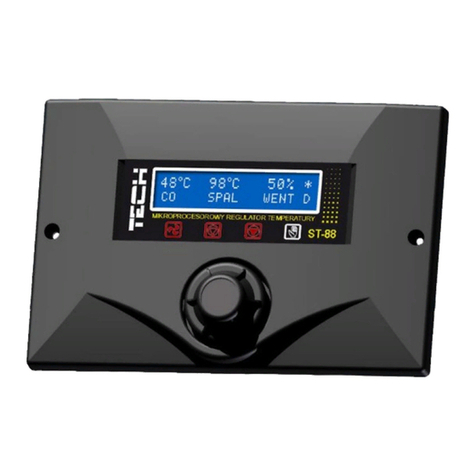
Tech Controllers
Tech Controllers EU-88 zPID user manual

Festo
Festo DFPD-Series operating instructions
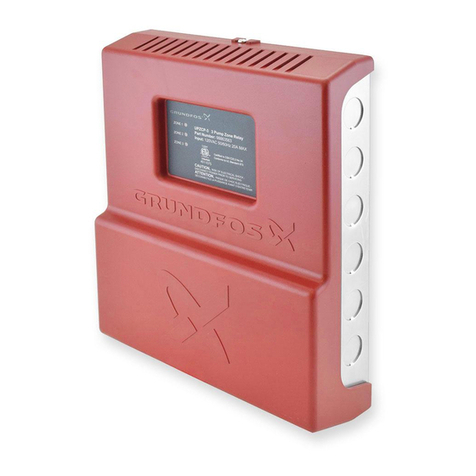
Grundfos
Grundfos UPZCP-3 Installation and operating instructions

Honeywell
Honeywell HercuLine 2000 Series Installation, operation and maintenance manual

Lemon
Lemon Stabilizer Plus quick start guide
Anolis
Anolis ArcPower Rack Unit Pixel CE: ArcPower Rack Unit Pixel... user manual
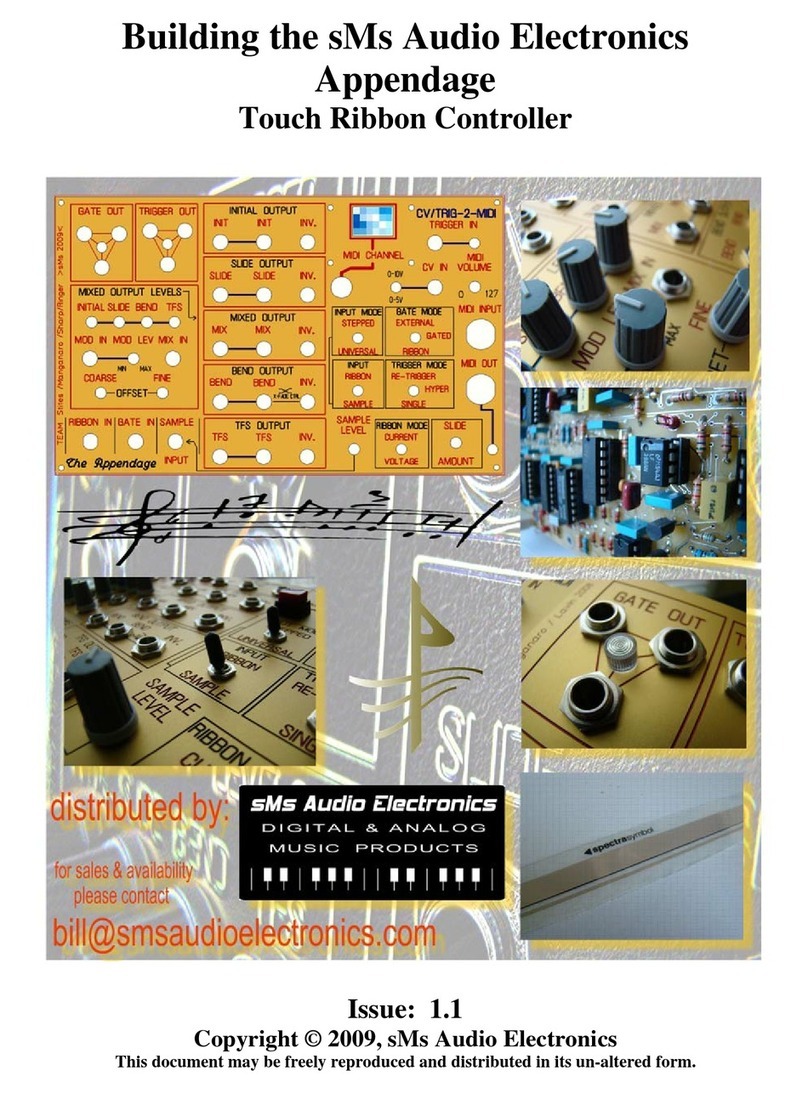
sMs Audio Electronics
sMs Audio Electronics Appendage manual
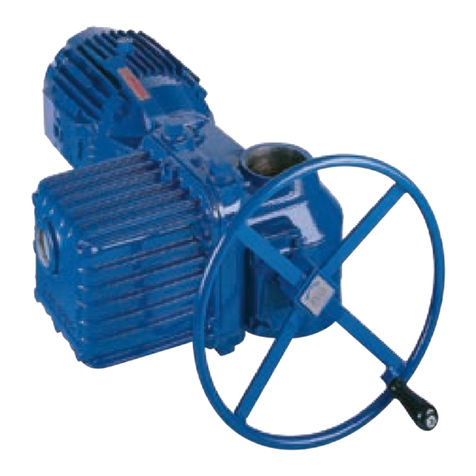
Flowserve
Flowserve Limitorque L120-85 User instructions

Cloud
Cloud CX462 Installation & setup guide

Watlow
Watlow Micro-Based Autotuning Control SERIES... user manual
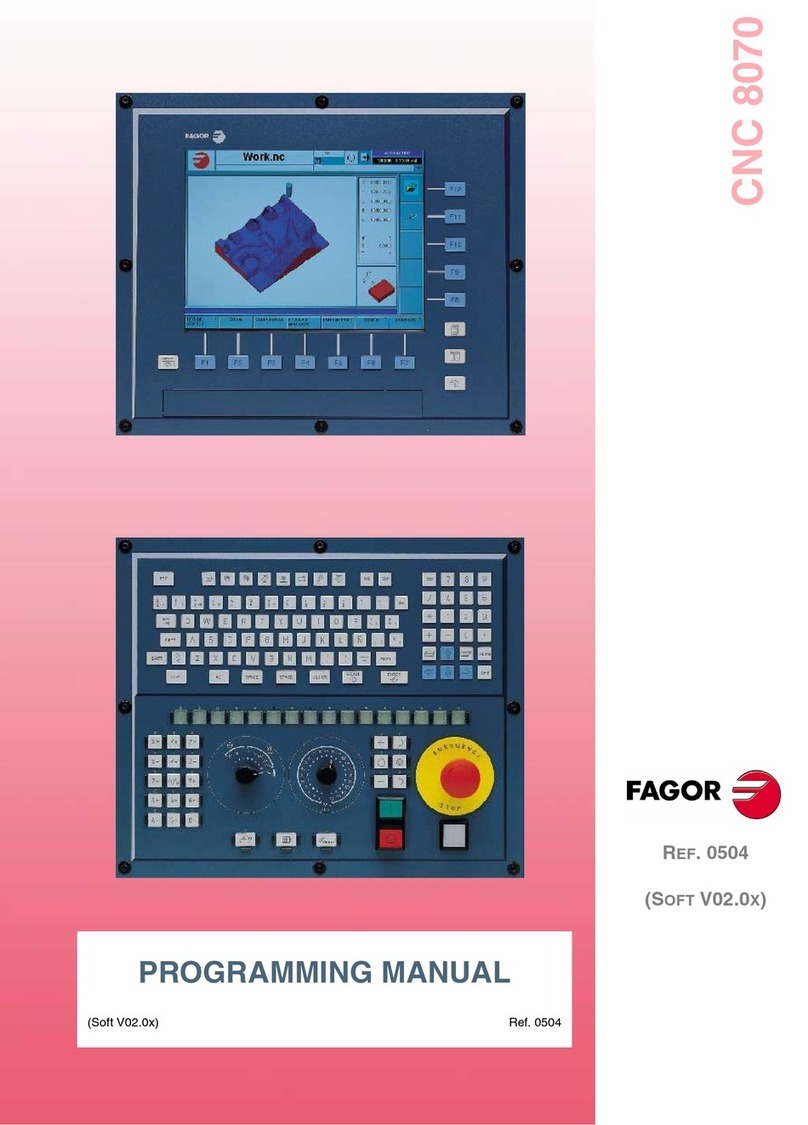
Fagor
Fagor CNC 8070 Programming manual
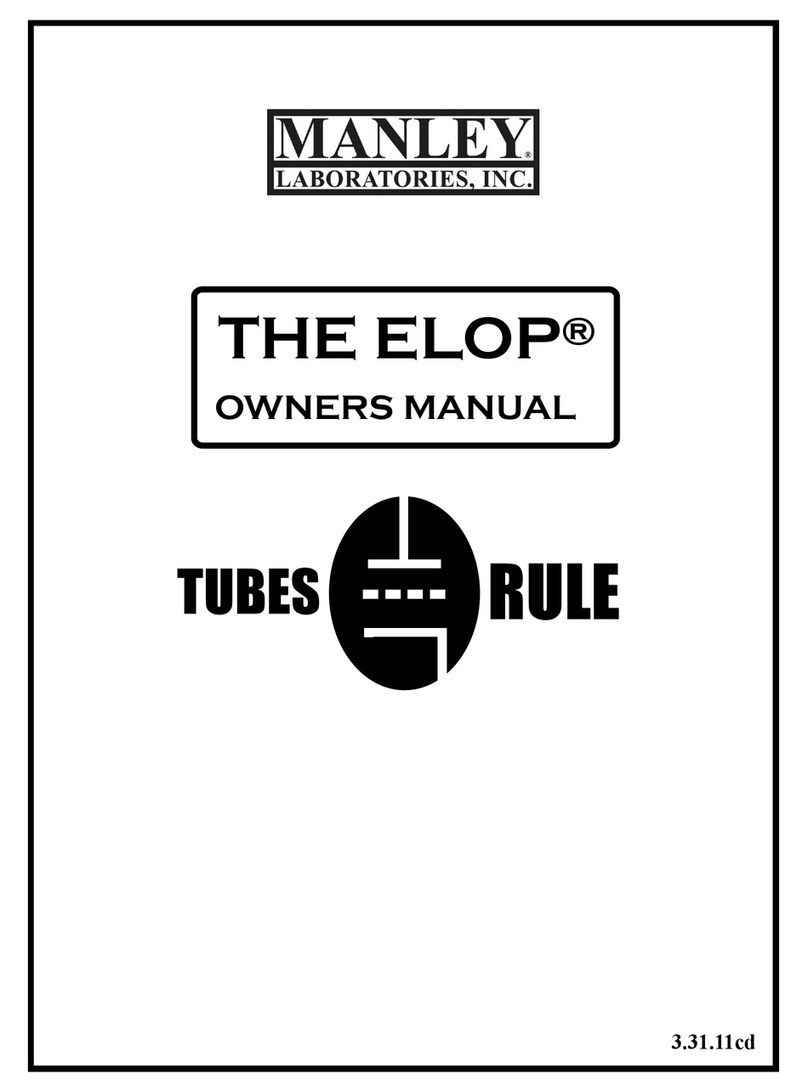
Manley
Manley TUBES RULE ELOP owner's manual
